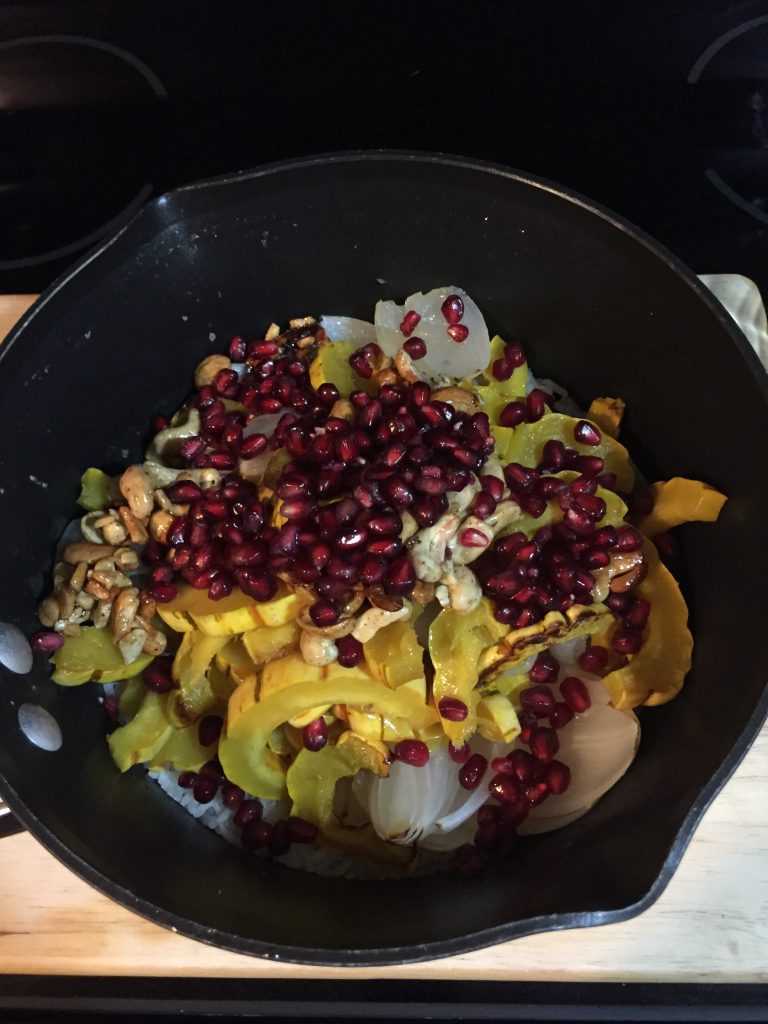
Sometimes, you have to scrounge for your lunch. For me, these occasions usually happen when I’m home for brief intervals between trips, which means they happen a lot in December. Not enough days in town to warrant going to the store, too many days to want to continue eating out: what to do about food?
This is a meal you can make with whatever you have lying around, and you can modify it according to the contents of your kitchen. For this reason, I’ve decided to organize this post according to each component rather than providing a step-by-step outline for you to follow. I prepared many elements of my meal using techniques I’ve described elsewhere on this blog, so I’ve also provided those links when relevant.
You Will Need:
- Some kind of grain, about 1 cup dry
- Squash, any variety (you could also use a sweet potato)
- Leftover vegetables that can be roasted
- Nuts
- Garnish
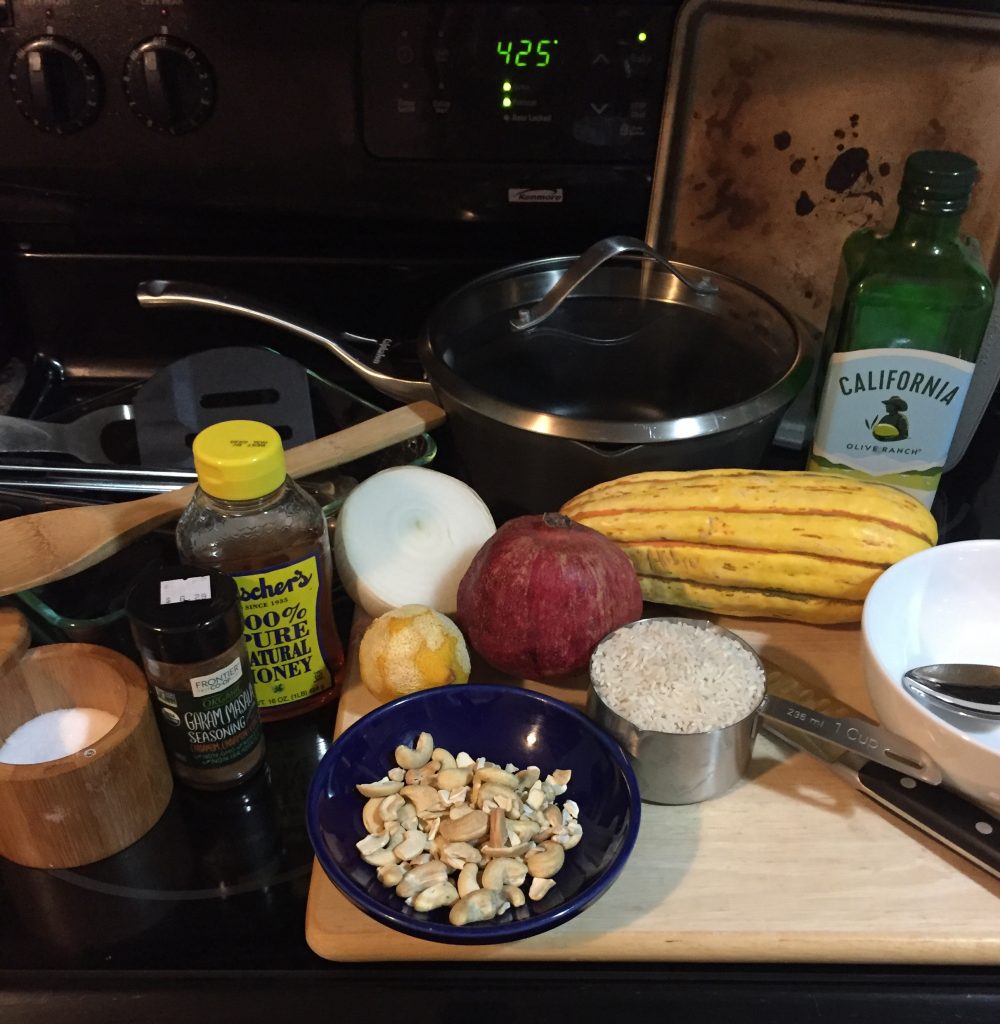
You will also need a few staples such as oil or butter, salt, and seasonings that you like and that will work with the ingredients you’re using. (My version required honey, garam masala, and lemon juice.) Once you have all of the individual elements ready, simply throw them in with the rice (grain) and stir. Add extra seasonings like lemon juice or salt, stir again, and serve.
Working With These Ingredients
In every case, the items I used were things I had purchased weeks or even months before. Here’s the breakdown of these components and how to prepare them:
Grains
Why I Had Rice On Hand: I store all sorts of grains in sealed glass jars, which preserves freshness. I used white rice here, but in hindsight I would have had a more nutritious meal if I had chosen brown rice, barley, or quinoa. I could have also used lentils if I had decided to avoid grains entirely.
How I Prepared Them: Cooking rice (or other grains) is an easy process that gets much-maligned by home cooks who have overcomplicated it. You need to follow only three easy steps to have perfect rice every time:
- Place dried rice into a nonstick pot along with twice as much water and a good dollop of oil (make sure the pot you use has a lid!). I use about one tablespoon of oil per cup of rice. You can used butter in place of oil if you like; your results will be the same. (Don’t worry about placing cold butter into cold water; it looks strange but works.)
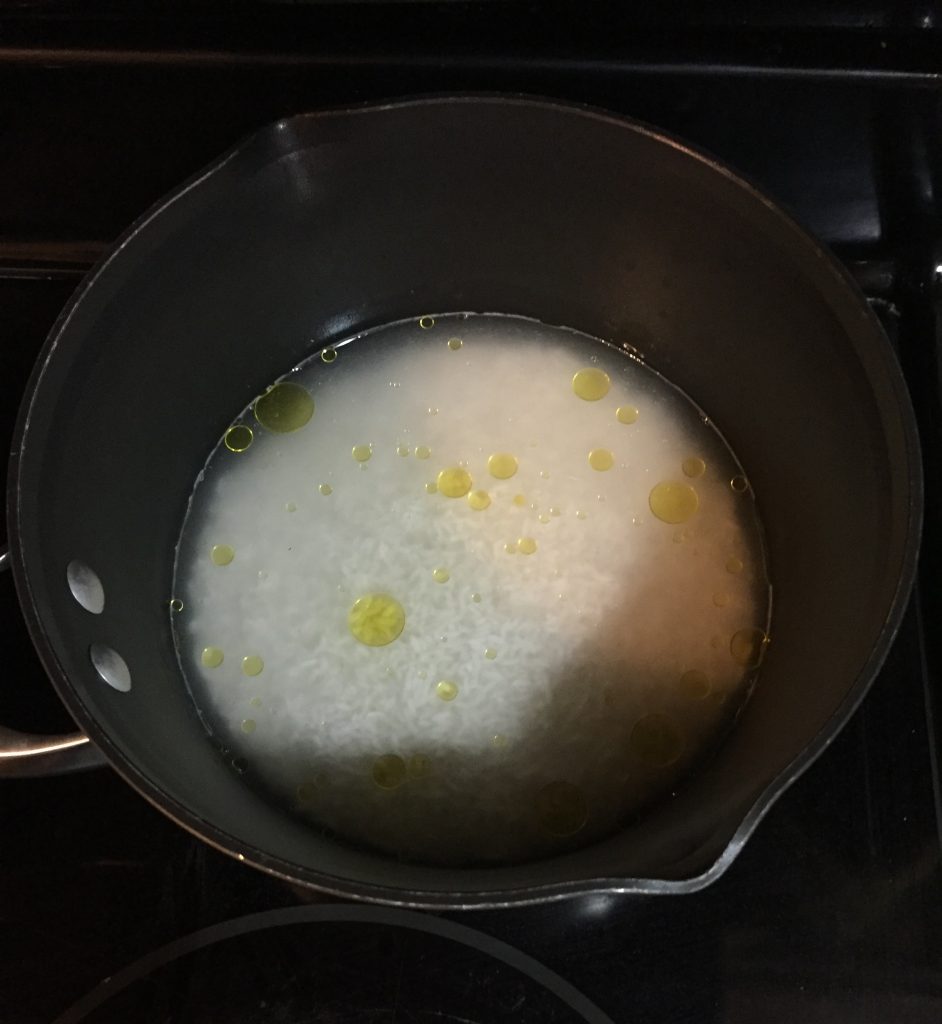
- Turn the heat to high and let everything come to a boil.
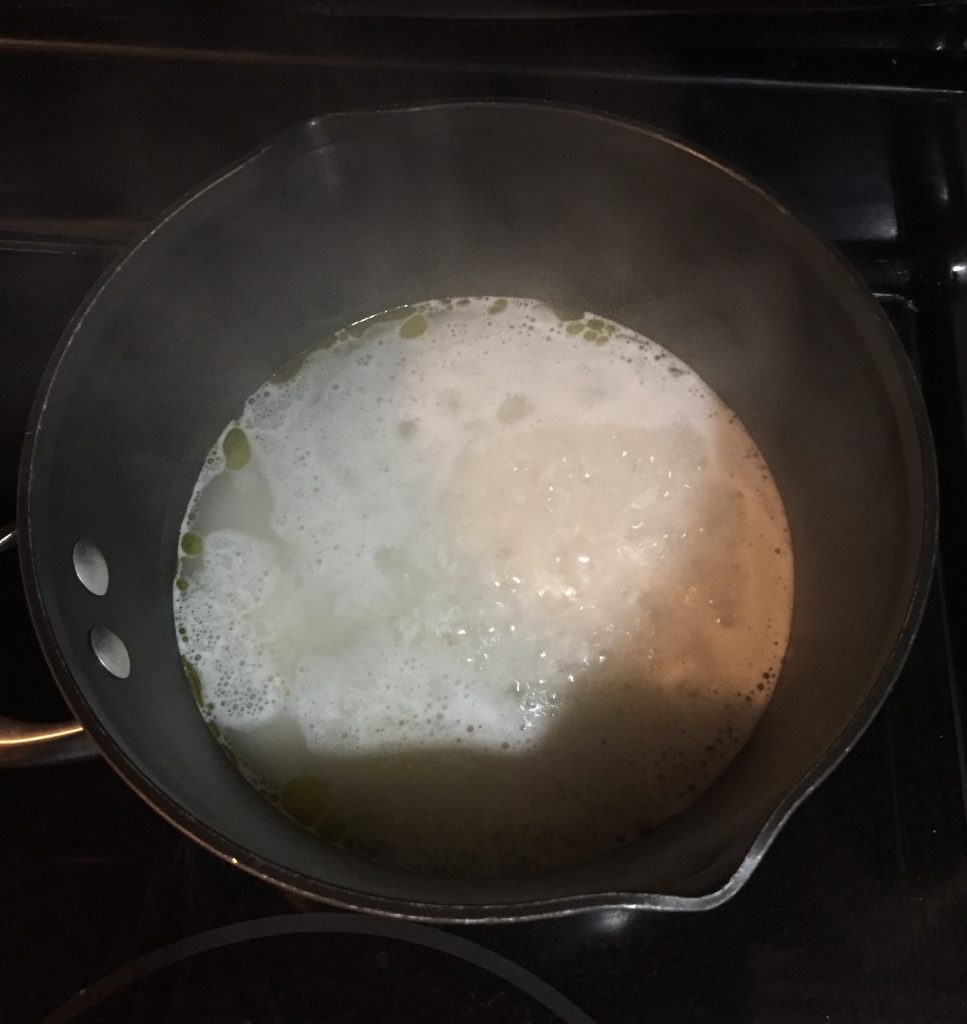
- Stir, place the lid on the pan, reduce the heat to low, and let the pot sit until all the water has been absorbed (20–30 minutes). If you let it go a little longer, it is unlikely that harm will come to the rice. The nonstick pot will prevent the rice from congealing on the bottom of the pan, and the oil you added will prevent the grains from sticking together.
If you’re cooking something other than rice, the process will be exactly the same. You just need to be prepared to use a different ratio of grains to water and allow a different amount of cooking time. In most cases, you can check the packaging or run a quick search online to get both of these answers.
Squash
Why I Had Squash on Hand: I’ve been known to purchase a squash or two “just in case.” You can leave a gourd to sit on your kitchen counter for well over a month, and it will not suffer. At the time I made this meal, I had two squashes available, a delicata (shown in the pictures) and an acorn (still uneaten). I recall purchasing the delicata at the end of October and the acorn a week or two later. As you can see, the squash was still perfectly edible.
How I Prepared It: Most of my information for roasting squash is available here. However, I’ve taken some pictures in case you’re curious about how I scooped it out and sliced it. Delicatas have an edible rind, whereas other squashes do not. If you aren’t sure which type you have and want to remove the rind, you can either use a knife to remove it during prepping or roast the squash in halves and then scoop out the roasted flesh with a spoon when done.
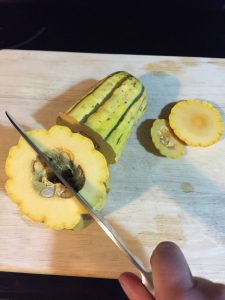
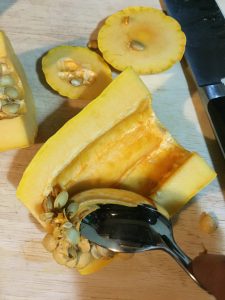
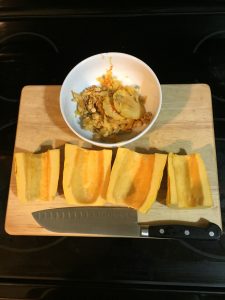
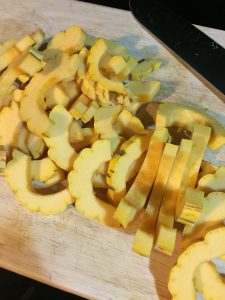
Vegetables
Why I Had Vegetables on Hand: A better question might be, when don’t I have leftover vegetables? In this case, we had a pair of onions left from Thanksgiving, which had been keeping on our counter. I roasted only half an onion for this recipe because I had used the other half the day before. Other options for vegetables (if you have them) might be fennel bulb, root vegetables such as carrots or potatoes, a tomato, etc. Any of these could roast with the squash and contribute to the dish. (Note that tomato will get very soupy, so you may want to roast it whole if you are going in this direction.) This meal would also be great with frozen spinach or chard warmed up and then mixed in, so check your freezer for options, too.
How I Prepared Them: As with the squash, I followed my own previously-published guidelines for roasted vegetables. If I were to do this again, I might have split the onion into more pieces and tossed it with the squash, in hopes that this would promote browning. As it was, my onions mainly steamed and didn’t add as much flavor as I would have liked.
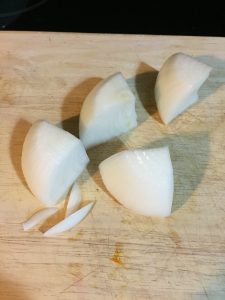
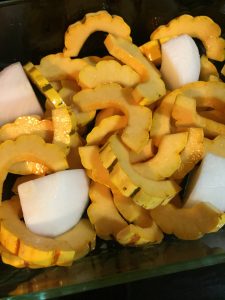
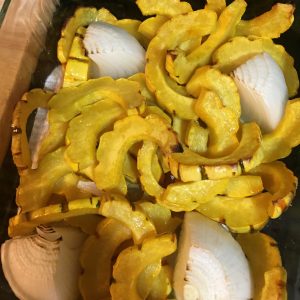
Nuts
Why I Had Nuts on Hand: I store nuts in the cheese drawer of my fridge, where they keep for long periods of time. The cashews had been sitting around for a while and I knew they would go with the rice and the squash. Pecans would have worked with something like sweet potato; walnuts might have been a better choice if I had been including a tomato.
How I Prepared Them: I borrowed a technique from the Arugula-Squash Salad that I’ve previously posted and roasted the cashews along with garam masala and honey. I would have modified this seasoning if I had been using different vegetables, but it’s worth remembering that your spice drawer can contribute a lot, especially when you’re improvising.
Garnish
What I Had on Hand: I had a lot of options for a garnish. I ultimately used pomegranate, which I had purchased and de-seeded because of the December 17 post, and the juice of half a lemon, which I had already zested for another purpose. If I hadn’t had fresh ingredients that I wanted to use, I would have substituted dried fruit such as currants, raisins, apricots, or cranberries.
How I Prepared It: You can get my directions for de-seeding a pomegranate here. However, if I had been using dried fruit I would have likely soaked it in lemon juice or wine while everything else cooked, maybe along with some cinnamon or another spice. Soaking will rehydrate the fruit and give you a nice burst of flavor when you bite into it.
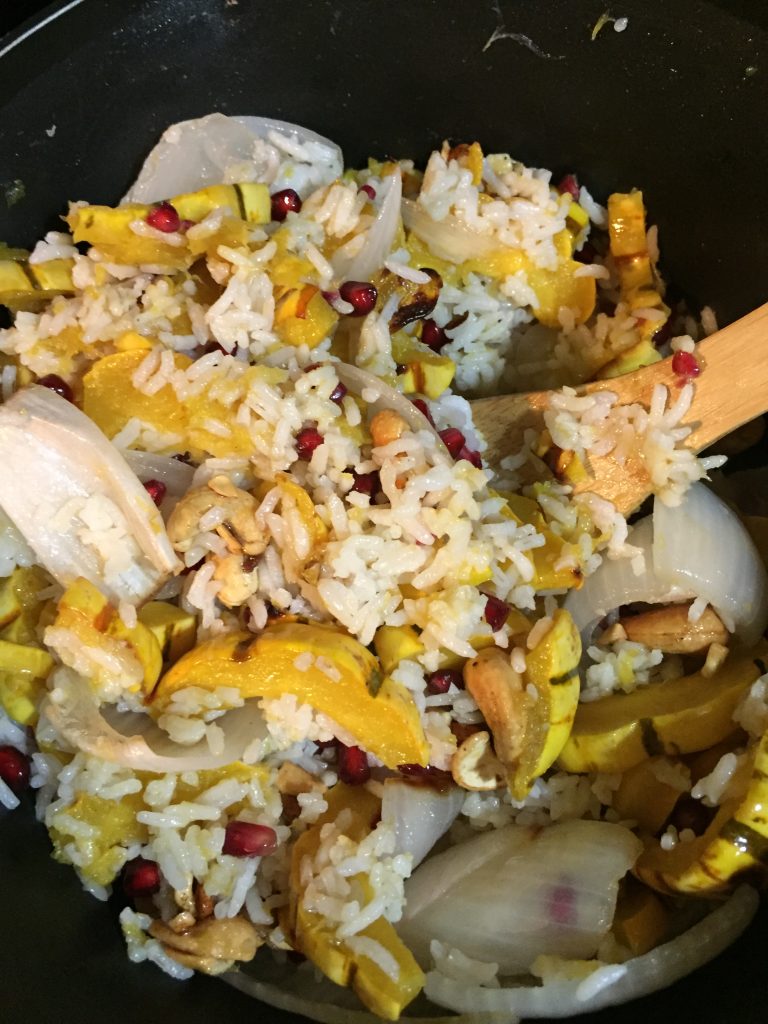
I hope you can see that if you were to use rice, squash, onion or frozen spinach, nuts, and dried fruit, you could make a meal with ingredients purchased many weeks in advance. You could also modify the recipe with canned chickpeas, dried lentils, sun-dried tomatoes, olives, or cheeses. Want to start thinking in terms of which ingredients you should keep close at hand? Check out this link for additional information.


